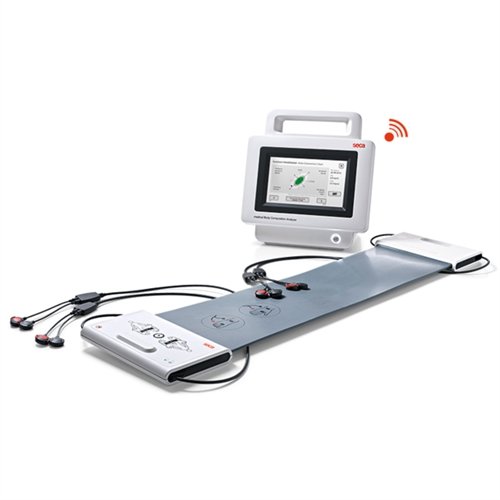
Scales lie. Measure your tissues instead.

Body Composition
A person’s total body mass (weight) or BMI often doesn’t tell the whole story about their health or performance. The composition of tissue types (such as fat tissue, skeletal muscle, and others) provides a much more comprehensive picture of a person’s health and fitness.
For most athletes, losing excess body fat can be helpful, but not at the expense of losing too much skeletal muscle. This can be a tricky balancing act without measurement and monitoring. Typically, a very low-calorie diet, especially one lacking protein, can lead to a rapid loss of lean muscle mass. This decreases strength but also metabolism, which makes weight management long-term even more difficult.
For sports performance, body composition analysis is far superior to a scale.

Skeletal Muscle
-
While many focus on losing excessive weight or body fat, having sufficient skeletal muscle is critical for health, performance, and long-term weight management.
-
Having low amounts of muscle (sarcopenia) increases the risk of obesity, many chronic diseases, and premature functional decline.
-
Muscle mass is the largest contributor to our resting metabolic rate (RMR), or the number of calories we burn each day. If you want a faster metabolism, get more muscles!
-
In addition to total skeletal muscle mass, your expanded report will include muscle mass by body region (torso, left/right lower limb, left/right upper limb).
Body Fat
-
Studies have shown that very high body fat is associated with many diseases. Our seca mBCA will provide a total Fat Mass Index (relative to height) as well “percent body fat”.
-
Healthy weight loss should be focused primarily on fat loss rather than total pounds. We want to retain as much muscle as possible; even if some skeletal muscle mass loss is inevitable with significant weight loss.
Visceral Fat
-
Not all extra fat tissue is the same in terms of poor health. Studies have shown that fat around the internal organs, aka. visceral fat, is a much bigger problem.
-
Visceral fat can be roughly approximated by waist circumference—the largest measurement around the abdomen. A waist-to-height ratio above 60% is associated with increased rates of metabolic syndrome & cardiovascular disease.
-
The body measurements we take combined with mBCA analysis, will provide a VAT Index. This is a score of visceral fat tissue relative to height.
Medical grade BIA
DOESN’T BIA STINK?
Traditionally, bioelectrical impedance analysis (BIA) measurements of body fat or muscle have been considered inferior to other methods, such as DXA scans. Largely, this has been due to many poor-quality consumer-grade devices (foot scales only measuring the lower half!) on the market.
VALIDATION
When combined with body measurements and proper algorithms, the seca mBCA device we use has proven quite accurate when compared to DXA, MRI, and other body composition technologies. A large number of clinical studies have shown this across a wide variety of body types and populations.






